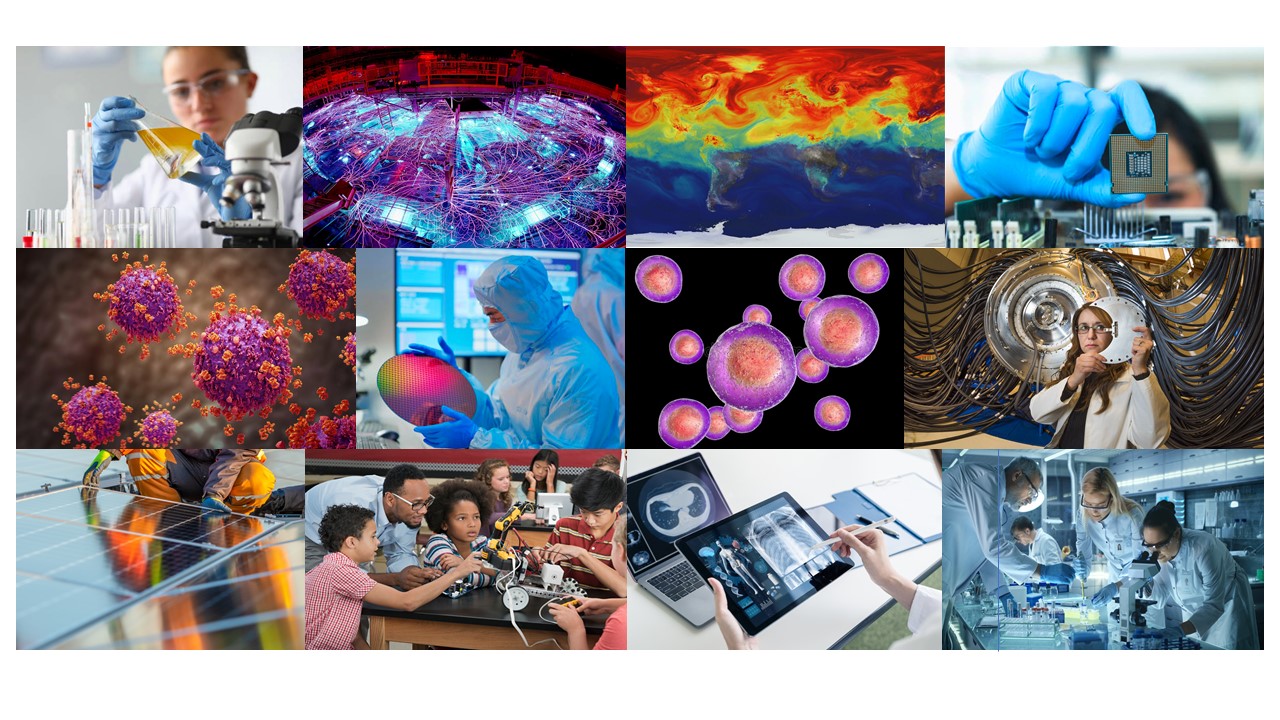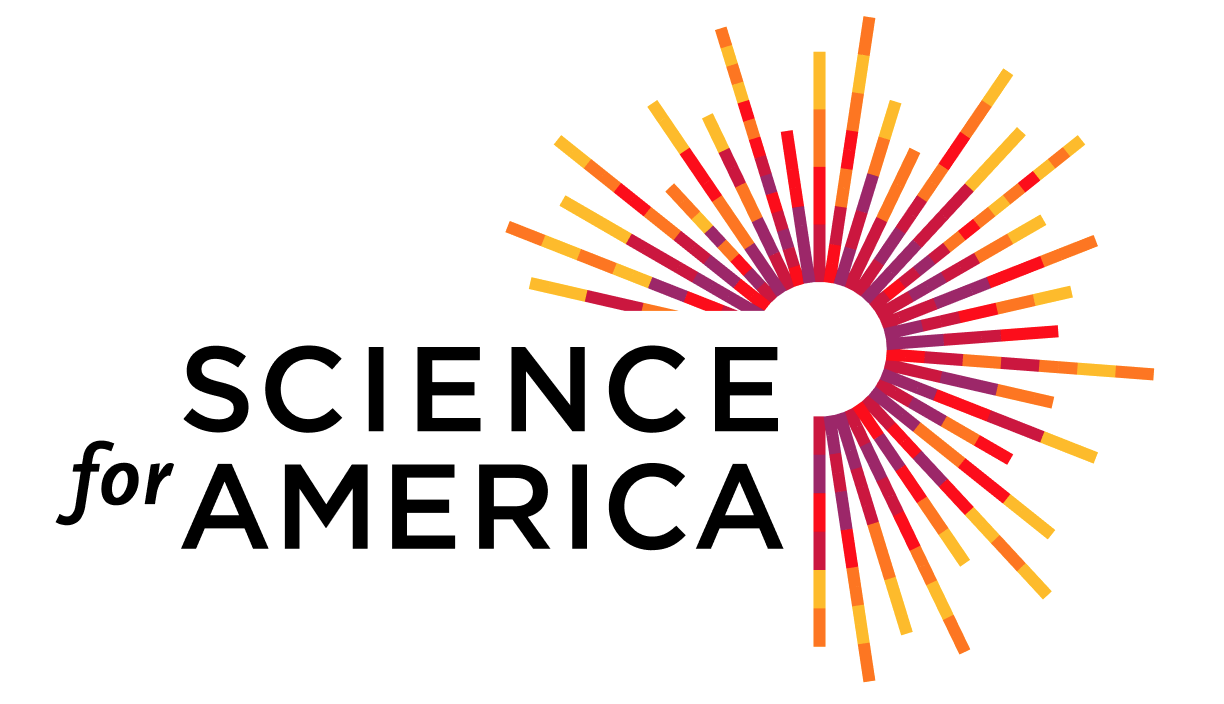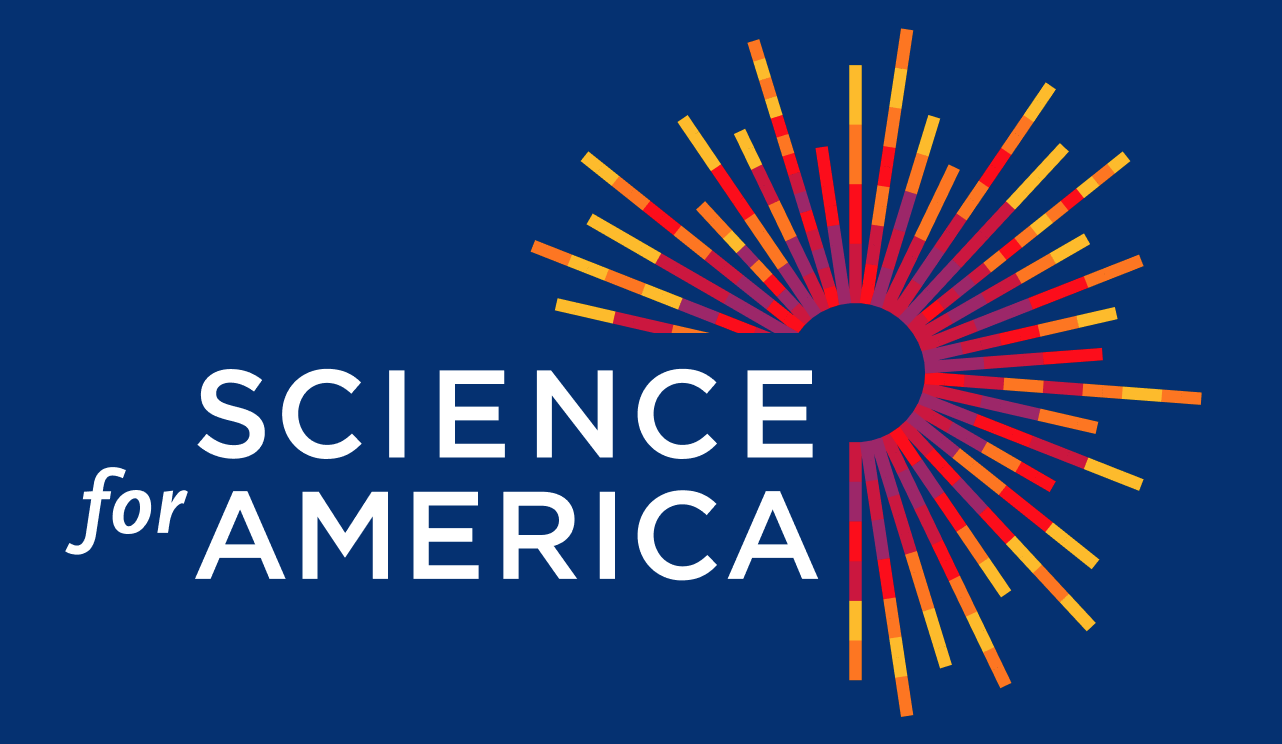Urgent Challenges
Science for America will initially focus on five areas of great national and global urgency and opportunity.

Bold and relentless innovation will be critical to solving the climate and energy crisis. We need to accelerate development, for all our needs, of net-zero-carbon technologies that are much cheaper than greenhouse-gas (GHG) emitting alternative—so that net-zero solutions are always the logical choice and so that underserved nations and peoples have access to more energy, not less. Currently, the world is dramatically underinvesting in potentially game-changing energy technologies, such as fusion, electro fuels, thin-film solar, inexpensive carbon capture, and more. We also need ways to directly, objectively, and rigorously measure and monitor GHG emissions around the globe—so we can assess progress and hold everyone accountable; this will require new science, new instruments, and new computation. And, we need far more systematic and replicable approaches to adaptation, especially for communities facing the greatest inequities.
Medicine and public health are ripe for transformation in the coming years. We have learned many lessons from the pandemic — successes, such as rapid vaccine development, and failures, such as ineffectiveness and inequities in our public health systems. We have also witnessed stunning advances in molecular biology over the past decades that point the way toward ‘programmable therapeutics’ where we can now deliver instructions to specific cell types to alter their behavior.
There are many urgent challenges in the health sector. One urgent need is to prevent future outbreaks from turning into devastating pandemics by continuing to drive bold innovation. It is critical to look at how we create, test and manufacture vaccines, therapeutics and diagnostics; and how we build early warning and monitoring systems. This is an historic moment and it is our responsibility to help transform prevention and treatment of existing infectious diseases and anticipate others on the horizon.
Another urgent challenge is to halve the death rate from cancer over the next 25 years. We can begin to do this by developing vaccines that can prevent many cancers; instituting annual blood tests for early detection; eliminating stark inequities in diagnosis, treatment, and outcomes based on race, resources and geography.
A third urgent need is to reimagine our public health system with ‘community-connected health’ that meets people where they are, has the tools it needs to serve them, and is trusted.
To succeed, America will need to draw on all Americans. Historically, STEM has failed to engage and often actively excluded many people—especially based on gender, race, region, and resources. With only 4 percent of the world’s population, the U.S. can’t afford to leave people on the sidelines. And, with scientific progress depending on fresh insights and perspectives, the U.S. needs to take full advantage of its unparalleled diversity. We need to build on and expand effective solutions to ensure that everyone can explore, belong, and thrive in STEM education, careers and leadership positions. Solutions include creating on-ramps to let people join at many stages; bridges to enable people to stay on track as they transition across institutions and life events; ways to expand access to launching start-ups; data collection to drive progress; and policies that reward success in ways that drive individual and institutional action. We also need to unleash the creativity of STEM teachers, explore new models for STEM in schools, and reimagine the role of schools to maximize their effectiveness.
America’s leadership and responsibility in critical technologies—such as semiconductors, synthetic biology, artificial intelligence, fusion reactors, autonomous machines, quantum computing, and much more—will be crucial to our own prosperity and security, as well as to the world’s. With near-peer competitors who have learned from us and are executing vigorously, we need to update our playbook. We need a clearer understanding of the mechanisms that can promote the creation of leading-edge and new technologies, new companies, and new jobs. We need to ensure that America remains the magnet for the world’s scientific talent from America and abroad—the most attractive and welcoming place for students to train, researchers to work, and entrepreneurs to build businesses. And, in all this, we need to work closely with allies who share our values and address global needs, including in countries that lack advanced capabilities in science and technology.
We need to rethink and reshape America’s innovation ecosystem across all sectors—by unleashing creativity and speed in scientific research and development and by urgently developing new mechanisms, institutions and programs designed to support bold goals, tolerate greater risk, move faster, span sectors, and operate at large scale when needed. We must draw on the complementary strengths of academia, venture capital, new start-ups, existing companies, and government. There is tremendous creative energy around this need in philanthropy, industry, and some parts of academia. We also need to encourage and support government to be maximally ambitious. It is time to think systematically about which approaches work best for which challenges. Getting this right will have a huge impact.

